Summertime repairs and maintenance are an important part of chimney care, but it’s something homeowners tend to neglect or put on the back burner. Why is this? Well, many associate chimney care with fall and winter since that’s when their fireplace is typically put to more frequent use.
Unfortunately, putting things off doesn’t always work out for the best.
What often happens is that once fall and the holiday season hit, everyone gets the idea to book chimney maintenance at the same time. This is why we, along with countless other chimney sweep companies, are at our busiest during the later months of the year – and getting that appointment scheduled at a time that’s both available and compatible with your calendar can be a challenge.
And we may come in for that annual inspection only to discover further repairs or maintenance is needed. We could detect high levels of creosote (which means a sweeping would be in order) or we might notice damaged parts or crumbling throughout the system.
Regardless, further appointments will need to be scheduled, putting you back right where you started – booking a slot in a season that is notoriously busy. And your fireplace shouldn’t be put to use until repairs are addressed.
Once cooler, rainier days come around in fall, we’re certain you’ll want to get those fires lit, so don’t put off the care you require any longer. Not to mention, those holiday gatherings come up quicker than you think! We’d hate to hear of get-togethers without that classic roaring fireplace going strong in the living room.
Call today to book an inspection with our team, so you’re all set and ready to go as soon as you’d like this fall. The CSIA-certified sweeps at Lords Chimney perform level 1, 2 and 3 inspections, ensuring you’re covered no matter what and can enter every season with the peace of mind you deserve.
Common Summertime Repairs
So, what are the more common summertime repairs we perform?
- Tuckpointing: If your old mortar joints are crumbling, missing, or damaged, then tuckpointing services are in order. This is the process of removing that old mortar and replacing it with new, so your system looks great and is supported. And we’ll coordinate colors and material types to ensure your chimney looks polished and flawless at the end of it all.
- Flashing Repair: The flashing is the piece of metal that covers the area where the roof and chimney meet up. This area is vulnerable to water leaks due to the roofing materials and chimney materials expanding and contracting at different rates. The flashing ensures none of that extra moisture can creep in, and it keeps both your home and your chimney a lot safer.
- Crown Restoration: Your chimney crown is what sits on top of your chimney, and it helps to both keep water out of your flue and send water out and away from the sides of your chimney. Your crown is exposed to rain, sun, and curious critters, so it’s not uncommon for it to break down, especially if it wasn’t built from appropriate materials in the first place. We have the expertise needed to get yours in tip-top shape, so it stands strong for the long haul.
- Chimney Cap Replacement: Your cap covers the flue opening to ensure water can’t simply go right down into your chimney and wreak havoc. Chimney caps also work to keep animals out, block downdrafts, stop outside debris from entering, and can even serve as spark arrestors. A strong, supportive cap is a must for any chimney, so be sure to invest in this affordable, worthwhile investment today Firebox Repairs/Rebuilds: The firebox is the area of your system that hosts the fire. It needs to be able to withstand the heat of your fireplace fires, and over time, even the most well-built firebox will face some wear and tear. Whether your unit is prefab or factory-built, this is one spot you don’t want compromised. Let us take a look soon.
- Relining Work: There are three big jobs your liner completes – protecting your masonry from acidic fumes and heat, protecting your home from fires, and ensuring your system runs as efficiently as possible. We reline with both stainless steel liners and HeatShield®, ensuring you find the best possible fit for your unique needs.
- And Don’t Forget a Sweeping!
It’s also not unusual for you to require a chimney sweeping in the summer to remove any harmful creosote that’s built up over the winter months. Creosote is highly flammable and it needs to be regularly removed or your chances of experiencing a chimney fire will increase significantly.
We can also remove animals and any nesting materials, so your system will be free of clogs and unwelcome critters. Then, we’ll cap it tightly to ensure nothing can work its way back in down the line.
Get Started by Reaching Out Today
Get on the right track for fall by investing in summer chimney maintenance now. Our sweeps are ready for your call! Dial 281-497-4000 to book your appointment.
We’re nearing the end of what is typically considered “hurricane season” here in the Greater Houston Area, which means your chimney may need some extra care and attention. Here are some of the main things to look for when assessing your potential chimney damage.
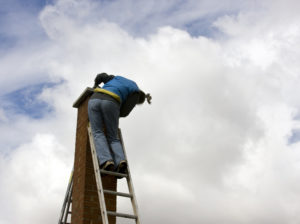 1. Missing Caps & Chase Covers
1. Missing Caps & Chase Covers
One of the biggest issues we discover after a hurricane is missing caps and chase covers. When those strong winds come in, your cap is often the first thing to go, and it could be multiple houses away by the time we have the chance to look things over!
And if your cap still seems to be intact, don’t let out a sigh of relief just yet. We’ve seen multiple cases where it gets blown off, only to fall right back into its original spot. This gives the appearance of a properly-fitted cap when in reality it’s barely hanging on.
Needless to say, investing in a new cap or chase cover as soon as possible is an absolute must. These keep out rain and downdrafts, and they prevent animal entry, as well. In the end, an affordable cap can be quickly installed by of our team of experts, and it will wind up saving you a lot of time, stress, and hassle over time.
2. Discoloration
Another indication of severe damage is discoloration throughout your structure. Now, hurricanes typically come in one of two forms – extra windy or extra rainy. If you’ve just experienced one with lots of water, then discoloration is often something you’ll notice in the aftermath.
If you see lots of white, for instance, this is a sign of efflorescence, or lots of green throughout the bricks indicates vegetation growth (a clear sign of standing water). You could also see brown or black patches, which indicates rust, creosote, or built-up soot. In the end, most types of discoloration can be traced back to water damage, so get our certified crew on the job right away if things start to look suspicious.
3. Gaps in Your Brickwork
Excessive wind and rain can easily trigger spalling throughout your system, which weakens your entire structurally significantly. Moisture has a big impact on the strength of your brickwork and mortar, and the more everything crumbles and breaks down, the more vulnerable you will be to gas leaks, fires, and even chimney collapses.
Our experienced crew will get things patched up in no time, and once we’re done we can offer waterproofing products that will help your masonry better withstand water and rainfall.
4. Leaning/Swaying Chimney
One thing we strongly encourage homeowners to do after a bad storm is to walk outside and take a good look at your chimney. Does something look off? If you notice tilting or leaning at all, then you’ll want a solid team of sweeps on the job quickly.
And while you’re looking, watch out for anything else that seems out of the norm. We mentioned discoloration and missing parts, but do you notice rust, cracks in your crown, worn down mortar joints, or anything else awry? Call us in. This is one area where you are always better off being safe than sorry!
Not Sure Where You Stand? Schedule an Inspection or Invest In A Virtual Assessment!
Now, if you’re just not sure what state your chimney is in, the best way to get an accurate assessment is to schedule an inspection. Getting our team out to perform a level 2 inspection will ensure any faults or structural flaws are spotted and addressed as soon as possible.
Or, if you have a busy schedule or you’re just inquiring about some reconstruction or remodeling work, send us a picture! We do virtual assessments, and we typically can give you all of the information you need without even having to come to your house. This saves time and expense on your end, and it can help you make an official decision as to whether or not you want to proceed with any changes or renovations.
You Deserve High-Quality Care
From strange smells to weird noises to worrisome drips, we can put all of your chimney-related worries to rest. The CSIA Certified Sweeps at Lords Chimney are experienced, and we take education seriously, so you can bet we’re always up-to-date on all of the latest techniques, tools, and technologies in the trade.
And remember – the more often you invest in care the better! By having your chimney serviced on a consistent basis, you make sure you get all of the insurance coverage you’re entitled to should a hurricane cause significant damage to your chimney. Regular maintenance offers you a track record that shows what state your chimney was in before the hurricane, so you can prove 100% that the storm was the cause of all your damage.
Ready to get this process going? Great! Give us a call now, and we can get your appointment scheduled.
The rainy season is upon us here in Houston, and as we move into spring, this rainfall will only continue. Because of this, it is imperative that you ensure your chimney and fireplace are protected! Water leaks are all too common in the world of chimneys. Many homeowners fail to realize that this is actually one problem that is easily avoided if the right measures are taken.
The biggest reason homeowners face problems with leaks and water damage is simply a lack of maintenance. If the chimney cap is missing or the chase cover is cracked or rusted, water will easily work its way in. By then, it is too late.
Get the scoop on chimney caps and chase covers below, then rely on our team to help you out with it all. Owner and CSIA Master Chimney Sweep, Lee Roff, is ready and eager to keep all of Houston and its surrounding areas protected. Lords Chimney is definitely the company you want to trust!
The Importance Of Chimney Caps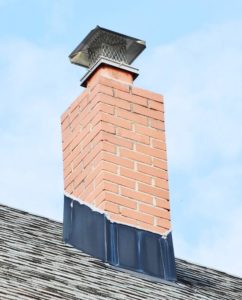
How vital is a chimney cap to the overall function of your fireplace? Well, without a protective covering over the top of your chimney, it is left completely open and vulnerable to whatever wants to enter. Whether its rain, animals, or outside debris, it has an easy way to access your home. If water enters your flue, it won’t be long before your metal components start to rust, and your masonry will start to crack and crumble, too.
Water will also break down your liner which leaves you vulnerable to gas leaks and house fires. Using a damaged system is really dangerous, but many fail to realize that they are even experiencing issues. This is why investing in regular inspections are so important!
Chimney caps also work hard to keep out birds and curious woodland critters. One common animal that loves to set up camp in chimneys is the chimney swift. These birds nest on vertical surfaces, and the warmth and protection your chimney offers is ideal. Unfortunately, their numbers are in decline, which is why they are now protected by law. What does that mean for you? Well, it means you’re stuck with them until they leave on their own. In fact, trying to remove them will land you with some hefty fines.
Avoid Chimney Swifts
Like most other birds, these will eventually migrate away from their nest, but don’t think your troubles are over then! They’re known to come back to their same nesting grounds when they return. Fortunately, we have a solution – a chimney cap. With one of these affordable devices in place, you won’t have to worry about any animals entering.
Raccoons, squirrels, and other creatures are also known to work their way into your chimney. In fact, we’ve seen raccoons have babies on the smoke shelf. If your damper gets left open, they could find their way into your home! All in all, getting these animals out and getting your chimney opening sealed up is vital for keeping your chimney, home, and family safer! Now is the time to get your cap installed, so don’t hesitate to reach out to our crew today.
All About Chase Covers
Chase covers, or chase tops, cover the opening of prefabricated units. These models have grown in popularity over the years since they are easier and cheaper to install. They also don’t require the commitment of actually building a permanent fixture in your home. Unfortunately, the flues on the units have been proven to attract even more birds than those of masonry chimneys.
Because of this, they need a protective covering, and that’s where your chase cover comes in. Nesting materials can clog things up in a hurry, causing draft and airflow issues. As nests are made of flammable materials, this also creates a fire hazard for your home. The smartest, safest, and most cost-effective route to take is to have a chase cover installed before any of these issues start to occur.
Unfortunately, a lot of these prefabricated models come with a chase cover that is made of weaker materials, which means it will rust and corrode before you know it. An ideal cover will be designed with a slight slope, ensuring water does not pool on top, and they should be made from strong products, such as galvanized metal, so you won’t need to worry about it breaking down any time soon. Ready for us to helpt? Reach out now – we’re more than happy to help.
We Are Dedicated To Our Customers
We go above and beyond to ensure our customer base is satisfied, and we are certain there is no better team than ours to trust throughout the Houston area. Our award-winning sweeps are certified with the CSIA and the NFI, and we’re members of the NSCG, too. We always use the high-quality tools and products we know you deserve, and you can trust that we never cut corners or take shortcuts.
The protection you’re looking for is a phone call away. Get in touch with us now!
So, you have chimney swifts in your chimney. The next questions may be, do they belong there and is it a big deal if they stick around? Chimney swifts may think your chimney is the perfect spot to set up camp, but the truth is that using a chimney that has chimney swifts and their nesting materials inside of it is unsafe for both you and the creatures themselves.
At Lords Chimney, we come across this issue from time to time, and we feel that it’s an important subject for our customers to understand. Learn more about these animals below, then keep reading to discover the best ways to keep them out of your chimney for good. Our expert team is ready to help you out!
What Is A Chimney Swift?
A chimney swift is a small bird that is known for its ability to stay in flight for extremely long periods of time. They’re typically darker in color with rounded heads, long and curved wings, and short beaks, tails, and necks. They eat all types of airborne insects and, as far as nesting and building homes, they favor steep, sheltered areas like hollow trees, caves, garages, air vents, and – you guessed it – chimneys.
Another thing to note about chimney swifts is that their population is in decline, which is why they are protected by the Migratory Bird Treaty Act. This means, once they settle in your chimney to raise young, there’s not a lot you can do about it. In fact, purposefully hurting these birds or removing a nest that may contain eggs or young could land you with some fines and/or penalties!
So, what can be done once a family of chimney swifts moves in? The truth is – nothing. All that is left to do at this point is wait until they migrate back down south, so you can remove their nesting materials and make your fireplace safer for regular use again. Unfortunately, it’s not uncommon for the birds to come back to the same spot again year after year, so it’s important to take action now to ensure they can’t get into your chimney next spring.
Taking Preventative Action
One thing that can be done to keep chimney swifts, as well as other woodland critters, out of your chimney for good is to have a chimney cap installed. Chimney caps cover your flue opening, so that animals cannot enter your chimney to build nests and raise young. This benefits both you and the animals! Your home will be a lot safer and more comfortable, and the animals won’t get stuck with no way out again.
The great thing about chimney caps is that they provide plenty of other benefits, as well. They ensure excess moisture stays out of your chimney and help prevent downdrafts, so you’re not stuck with a smokey living space night after night. They’ll also stop sparks from escaping the chimney, so they don’t risk landing on your flammable roofing materials. Achieving peace of mind has never been easier!
Ready for your new chimney cap? Call today to set up your appointment.
Chimneys are complex structures, and it takes time and training to learn about their various parts and the best way to operate each specific system. Fortunately, there are plenty of chimney professionals (like the crew here at Lords Chimney) that are trained, certified, and would be happy to help with it all. That’s why hiring these certified technicians for an inspection every single year is so important!
That being said, we’d still like to urge homeowners to learn some of the more basic parts of the chimney. Why? Well, there’s a few good reasons…
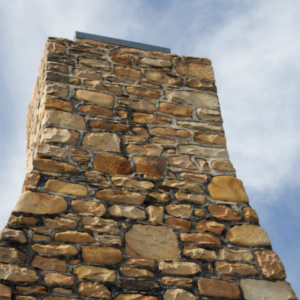 So you can be aware of common issues and reach out for help well before they get worse.
So you can be aware of common issues and reach out for help well before they get worse.- To understand and make more informed decisions about your home.
- To make that the annual conversation with your chimney sweep a great deal more clear.
- To be aware of potential risks and hazards, and keep your home and family safer.
And if you sense some repairs are in order? Call on Lords Chimney right away! We’d be happy to answer any questions and do everything possible to help you out.
Your Chimney Parts
So, we’re not going to go every nook and cranny of your system, but here are the ones to know if you’re looking for a better understanding of your system as a whole.
- Chimney Liner: Your fireplace produces flames, intense heat, and toxins, all of which can put a lot of wear and tear on your chimney – and fast! The liner seals the inside of your chimney so that doesn’t happen. Without one in place, your mortar will break down, your bricks will crack, and your entire system will become a lot more vulnerable overall. Not to mention, flames and dangerous fumes will have easier access to the rest of your home, which puts your family at risk.
- Chimney Cap: Chimney caps serve some really important functions. They block downdrafts, prevent animal entry, keep out harmful debris, stop any stray sparks from landing on your roof, and (probably the most important thing) help to eliminate water exposure and damage. The best part is, they’re inexpensive and quick to install – invest in yours today!
- Damper: Dampers work to keep your system protected from outside elements when it’s not in use, and once you get your fire going, it opens up to allow smoke and fumes a safe passageway out. There are two common types of dampers – throat dampers and top-sealing dampers, and nowadays most sweeps recommend the latter, due to their tighter, more effective seal. Ask us about upgrading yours today!
- Chimney Crown: The crown sits at the top of the chimney, slanting downward to help direct water away from the sides of the masonry structure. Here’s the thing, though. If it’s not made from the right materials (i.e. from a Portland cement-based mixture) and doesn’t overhang the chimney by 2 inches on all sides, you’ll still find yourself experience various types of water damage. Trust in us to get it done right.
- Chimney Flashing: Your flashing consists of metal sheets that are layered to cover the spot where your roof meets the base of your chimney. Why does this area need extra coverage? Well, it’s essentially bridging the two different materials, so they can expand and contract, as needed, without the risk of water entering your system. Without properly installed flashing in place, both your chimney system and your home will be a lot more vulnerable to water-related issues.
- Firebox: Whether you have a prefab system or a masonry one, the firebox is the area that holds the fuel and fire. It’s designed to withstand high temperatures and direct contact with flames, so that you can enjoy your system to the fullest with no fear of the fire spreading or breaking down other areas of the home.
- Smoke Chamber: The smoke chamber is one of the most important parts of a chimney, but is often overlooked because it’s hidden away. The smoke chamber is the area just above your firebox, and it’s shaped like an upside down funnel. This is so it can safely and effectively direct smoke up into your chimney, where it can then exit your home. Unfortunately, many smoke chambers were built corbeled, which can hinder airflow. If this is the case for you, consider investing in parging services.
Experiencing Chimney Issues?
Ok, so now that we’ve gone over Chimney Anatomy 101, here’s the next question homeowners tend to have… What do I do when one of my chimney components is experiencing issues?
First things first, schedule an inspection. If you own a fireplace, then you know that inspections are essential, as many chimney-related issues can put your home (and those within it) at risk when not promptly addressed.
If you live in or near the Houston area, our team of experts would be happy to help! Our Chimney Safety Institute of America (CSIA) certified techs will look things over, do some troubleshooting to figure out exactly what’s making your fireplace experience less than enjoyable (or even potentially dangerous), then advise you on the best ways to fix any issues.
Note: Not spotting anything obvious? It’s still recommended you get that annual inspection on the books. Oftentimes, chimney problems are hidden within the flue, offering no clearcut indication that anything is actually wrong. Having a pro look things over every year (before the start of each burning season) is always the recommended route!
Common Chimney Issues
What are the more common issues we come across when troubleshooting?
- Chimney Venting & Draft Problems: When it comes to operating your fireplace safely and efficiently, proper draft and airflow is a must. If drafting issues are present, you could have smoke, carbon monoxide, and other potentially hazardous fumes backing up into your home, which isn’t good for aesthetic or for the health of those in the space. Whether you need a sweeping to clear out clogs, a new chimney component installed, or even a rebuild or restoration, we can get it done.
- Smelly Fireplaces & Chimney Odors: Smells in the flue are often caused by creosote deposits or outside debris building up inside of it. In these cases, a chimney sweeping can be an effective solution to clearing things up and giving your nose a well-deserved break. Other times, smells are caused by animals in your flue or downdrafts. Whatever the case, we’ve got solutions.
- Smoke Issues: A fireplace that sends smoke into your home isn’t only an annoyance – it’s also dangerous! Inhaling smoke (and with it, other potentially hazardous fumes) can trigger health issues, and it can leave an unpleasant lingering smell behind in your living space, too. Like with poor drafting or bad odors, there are lots of reasons you might be experiencing smoke in your living space. The good news is, we’ll be able to get to the bottom of it.
Is Your Chimney Older?
Owning a home with an older fireplace system often comes with its own unique set of maintenance issues. However, by better understanding the structure and condition of your chimney you can continue to enjoy it for years to come.
Before we begin, let’s clear up what we mean by an “old chimney.” For the most part, “old” chimneys are more than 60 years old and are exclusively built with masonry. If this is where your system falls, then it’s important to consider that it may be missing important parts or need some updates.
Some common problems in old chimneys include:
- Missing Liner: One of the most common issues seen in older chimneys is a lack of a chimney liner. While it may be tempting to believe that a chimney that has been unlined for 100 years or more is safe to use, best practices indicate that all chimneys should be lined. Relining the chimney can improve the efficiency of your fireplace, as well as protect the rest of your home from the heat and gasses created during combustion.
- Outdated Chimney Components: The components of older chimneys often fail to meet modern building standards. For instance, the cap may be missing, the crown is more prone to be outdated, and the damper is likely rusted and doing a poor job. Installing new parts and making any necessary adjustments can go a long way in both keeping your system healthier and improving efficiency.
- Masonry Damage: Although chimneys are built to last, long-term exposure to the elements (especially without regular maintenance) can lead to masonry damage. We can help with tuckpointing services, during which we remove any old mortar, and replace it with new, more durable materials. Unfortunately, in older chimneys, this can be quite the process, so be sure to leave it to the pros! (And be sure to invest in waterproofing afterwards, too.)
Don’t Put Off Care – Call Us Today!
If you’re experiencing issues with your fireplace, don’t wait to call in our experts. We are here and ready to ensure you’re set up right for the rest of your burning season. Reach out now!
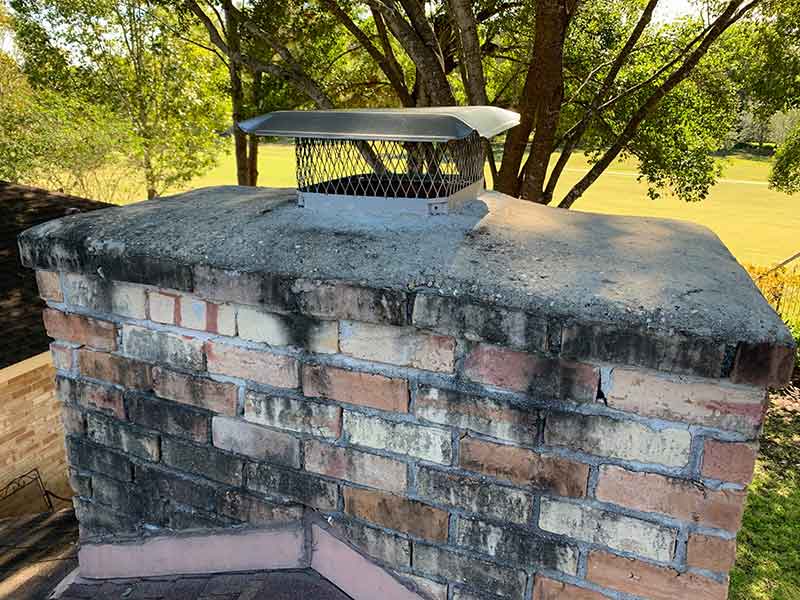

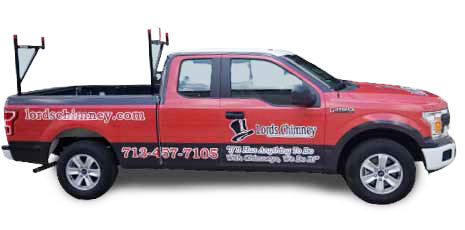
 1. Missing Caps & Chase Covers
1. Missing Caps & Chase Covers
 So you can be aware of common issues and reach out for help well before they get worse.
So you can be aware of common issues and reach out for help well before they get worse.